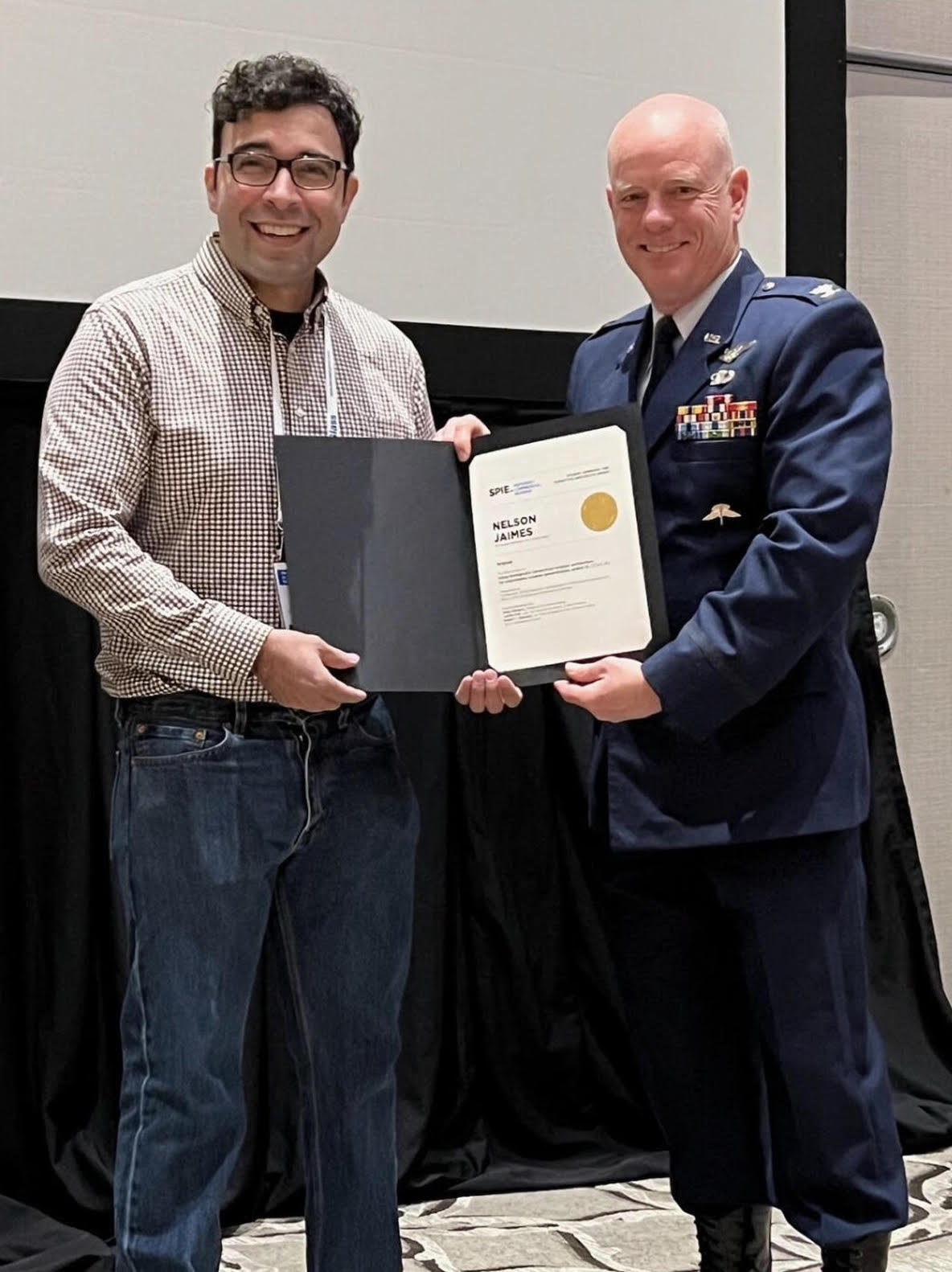Emerging technologies have the power to redefine business and connections as we know them. Explainable artificial intelligence (XAI) and AI conceptual learning are examples of these disruptive technologies in the field of information sciences that Computer Science Ph.D. student, Nelson Jaimes, explored alongside his advisors Chen Zeng and Rahul Simha. Jamies presented their paper, “Using biologically hierarchical modular architecture for explainable, tunable, generalizable, spatial AI,” at the 2023 Disruptive Technologies in Information Sciences conference and won the Student Emerging and Disruptive Innovation Award!
The Disruptive Technologies in Information Sciences conference is a subset of the Defense + Commercial Sensing program led by the Society of Photo-Optical Instrumentation Engineers (SPIE). SPIE brings engineers, scientists, students, and business professionals together at annual conferences to advance light-based science and technology.
Currently, XAI and AI conceptual understanding are unsolved topics generating research interest. XAI is being explored for various machine learning applications that aim to describe the decision-making employed by many artificial neural networks (ANNs) intuitively for humans. In contrast, AI conceptual understanding is an issue that falls more within the realm of AI model generalizability and integrability. Thus, Jaimes and his advisors raised the question of how might computational problems of this difficulty be solved, and more importantly, which approach will result in genuine advancement in neuroscience and AI?
A strategy often used in machine learning is to use knowledge about biological brains to inspire machine learning model design. Jaimes and his advisors utilized the same unification strategy between neuroscience and AI by focusing on the usefulness of using current neuroscience knowledge to design biologically hierarchical and modular architecture (BHMA) models of the brain that can solve spatial learning tasks.
In the conference’s call for papers, they ask for innovative ideas and projects to showcase as the next profound advancement in the information sciences domain. In Jaimes’ presentation, he discussed the potential implications of biologically constrained hierarchical neural networks on the future of human-computer interaction, computational neuroscience, and machine learning, given their potential for generating more explainable models with verifiable aspects of conceptual understanding. As neuroscience knowledge and machine learning capabilities continue to grow and develop, the unification of both fields may yield significantly different models that further advance the information science landscape.
“The SPIE Disruptive Technologies Information Sciences conference offers students a great opportunity to highlight new scientific ideas that may result in dramatic changes in the information science landscape. It was humbling to be a winner of the Student Emerging and Disruptive Innovation Competition and meet prestigious researchers and directors who are actively shaping technology for a better and safer future,” Jaimes said.



